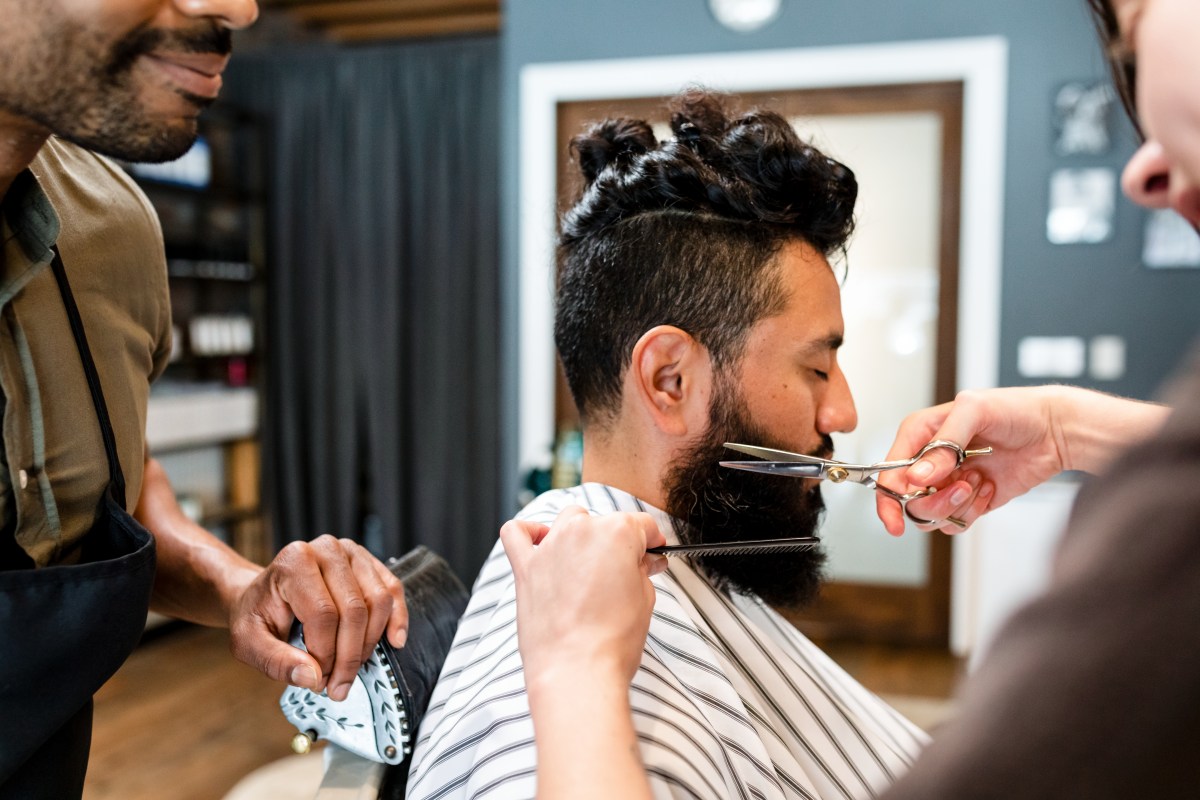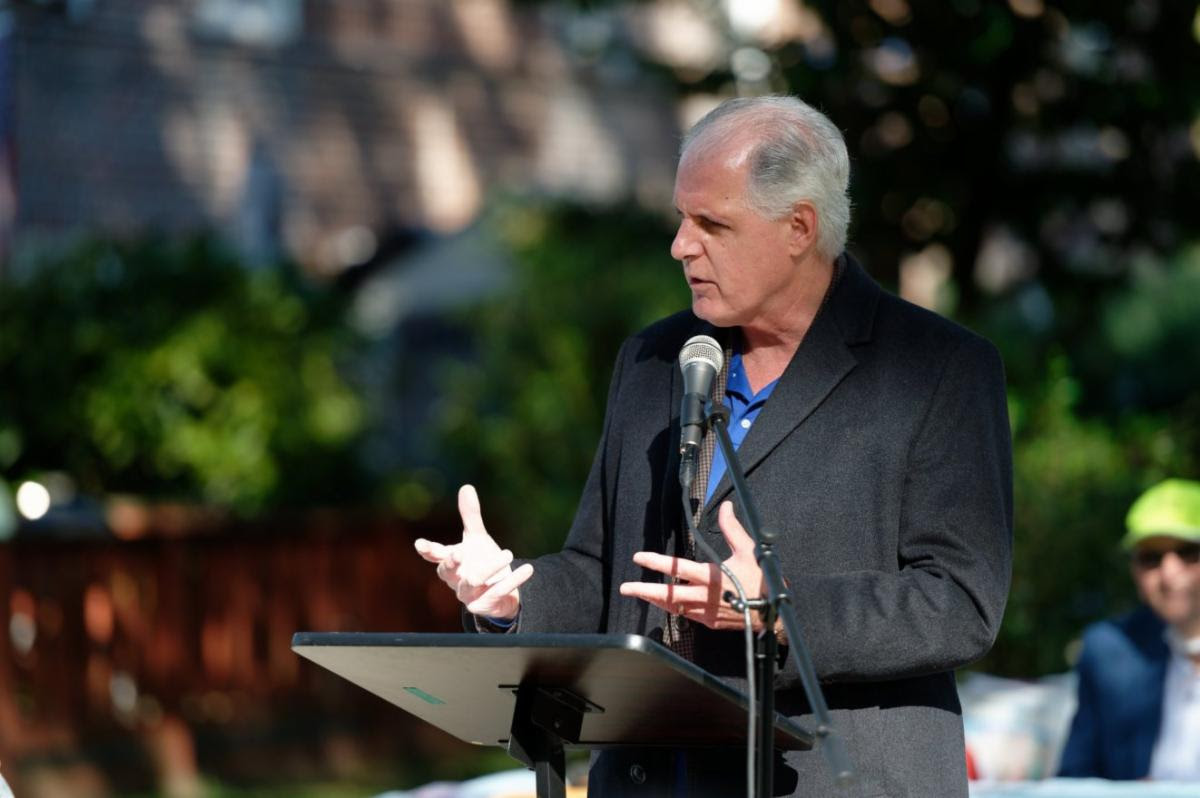By Ronda Kaysen
When Rebecca Walton arrived in New York City from Milford, Conn., five years ago, she was 18 years old and transgendered and had no intentions of returning to the Connecticut suburb where she was raised as a he. Fleeing a rocky relationship with her stepfather, she had $60 in her pocket and nowhere to go.
After several weeks working as a prostitute, she found much-needed shelter: Covenant House, the only city-funded shelter for homeless and runaway youth. But instead of finding a refuge, she found herself in an institution that scorned homosexuality.
Trouble began immediately. After her intake session, she was placed with the male clients, despite her requests to room with the women. At her psychological evaluation, the psychiatrist who examined her suggested she stop dressing as a woman.
“Covenant House feels like straight up prison,” Walton told The Villager in a telephone interview.
Where the staff was unsupportive, the male clients she shared her room and meals with were downright dangerous. The physical and verbal taunts from the male clients began the first night and escalated from there. Two months into her stay, six of the clients attempted to rape her. The only person who intervened and thwarted the assault was another homeless teen at the shelter. “The staff did nothing,” she said.
She moved to the shelter’s transitional program shortly thereafter, but found it no safer. Eventually, Walton decided she’d had enough. “I felt as though something was going to happen,” she said. “I had to get the hell out of there and find something that would make me a lot of money.”
Knowing of no other youth shelters, she took matters into her own hands and returned to selling sex on the street. When occasionally her exploits would land her at Riker’s Island, it was something of a relief — she preferred the jail to the Covenant House.
“At least at Riker’s there were several nights I could have a decent night’s sleep,” she said.
Walton is just one story of the thousands of homeless young gay and lesbian youth living on New York City’s streets. As many as 40 percent of the homeless and runaway youth sleeping on the streets, in shelters and hopping from one Samaritan’s — or sugar daddy’s — couch to another identify as gay, lesbian, bisexual or transgendered.
For young people too old for the city’s foster-care system, but still young enough to be accounted for by the Department of Youth and Community Development, Covenant House is the only city-funded shelter available to them.
D.Y.C.D., which funds Covenant House, does not keep track of how many young people wander New York City’s streets without a place to go, but the Empire State Coalition of Youth and Family Services pegged the figure at a staggering 15,000 to 20,000 homeless youth in 2003. City Councilmember Lew Fidler who steers the Youth Services Committee, estimates the real number is about half that — 8,000.
Currently, there are only a handful of shelter beds in the city designated for the 4,000 to 10,000 homeless gay and lesbian youth — and none at Covenant House, which has beds for minors and young adults at its Midtown shelter.
“Covenant House is notoriously unsafe for gay kids,” said Carl Siciliano, a former Benedictine monk and founder of the Ali Forney Center, a transitional living program for gay and lesbian youth. “Most gay kids would rather choose to prostitute and survive on the street than subject themselves to the violence and the intimidation and the degradation they face at Covenant House.”
Covenant House, a private, Catholic organization that receives 15 percent of its funding from the city, told Councilmember Fidler that only 3 percent of the young people who walk through their doors identify as gay or lesbian, and many of their beds remain empty each night.
“If your mission is to bring young people in off the streets and protect and love them and give them a place to sleep at night and you have 60 empty beds and your demographic data says you are completely missing 50 percent of your market, you ought to be doing a little introspection here and saying ‘Why is this?’ ” said Fidler. “Covenant House has, at the very, very least, gotten fat and lazy about their mission…. Their response left me seething.”
According to gay and lesbian activists, gay and lesbian young people are more likely to wind up homeless than straight youth because of their sexual orientation. “People are coming out at younger and younger ages, which is a total change from a generation ago. For the first time now, people are coming out when they are still economically dependant on their parents for survival,” said Siciliano.
Charlene Artis was one economically dependent teen who found herself gay and homeless at the age of 17, while she still lived life as a boy.
Her father died of pancreatic cancer when she was 16 and she and her mother were tossed out of their Staten Island apartment soon after. Her mother went to live with Artis’s sister. Gay and struggling with drug addiction and depression, Artis was suddenly homeless at the age of 17. She spent her first homeless year sleeping on a bus.
“My friends was like, ‘Yo, go to a shelter, they’ll try to help you,’ ” said Artis, now a tall 22-year-old transgendered woman with long cornrows and thick glasses.
Her first stint at Covenant House was brief. She arrived one evening, while still dressed and identifying as a boy, with a group of friends. One of them — a cute teenager named James who Artis hoped would return her feelings for her — told the other young male clients that Artis was gay. They ganged up on her quickly, pelting her with batteries and calling her a faggot. At dinner, they pushed her to the floor, telling her, “Faggots don’t eat with us.”
Security cameras peppered the shelter hallways and cafeteria, said Artis, but no one intervened. When she told a staff member what had happened, the employee told her that if he didn’t see the abuse, he could do nothing to stop it.
Artis left early the next morning. Battling an increasingly severe drug habit, she soon turned to prostitution, working along the Christopher St. Pier in the West Village until eight months ago.
Her second experience with Covenant House occurred three years later, long after she began dressing as a woman. Having missed curfew at Sylvia’s Place, an emergency shelter for gay and lesbian youth in Midtown, she arrived at Covenant House late. Like Walton, she was placed with the males. She spent the night sleeping on the floor — “faggots” don’t sleep on beds, the other clients told her.
“It was scary, it was hard, but I thought positive. You know, I have Sylvia’s Place. This is just because I didn’t come home on time,” she said. “Now I know to get my ass in the place.” She left early in the morning and never returned.
Covenant House is understaffed with “inconsistent” policies and “no clear protocols,” according to Eric Hartman, a former Covenant House social work intern. In one instance, a gay client was discharged for retaliating against repeated violence done to him. One Covenant House psychiatrist told gay clients that their homosexuality was the root of their problems and they should simply stop being gay. Hartman took to sending gay clients to the emergency room at St. Vincent’s Hospital for their psychiatric evaluation, instead.
Hartman, at the time an undergraduate at Rutgers University, noticed one of his clients was being regularly beaten by other clients, and informed his supervisors. “There was no protocol,” he said. Hartman moved the client to a probationary area for problem residents. “It was the only place he could be protected,” he said. Some staff members were sympathetic to gay clients, he said, but the shelter was helplessly understaffed and, in many ways, out of control. With no staff training available to address the needs of gay clients, Hartman often felt stranded. “I was told they had sensitivity training, but I never saw it,” he said.
Private institutions do not create city policy nor do they determine what sorts of funds are allocated in the city’s budget for services. D.Y.C.D. set aside $5.4 million in its budget this year for homeless and runaway-youth programs and has been consistently funding 15 percent of Covenant House’s budget since 2002.
“It’s important here to put the onus on government,” said Patrick Markee, a senior policy analyst for Coalition for the Homeless, a homeless advocacy group. “Government funds and directs the majority of its funding for homeless youth to Covenant House. It does not do that ensuring that Covenant House provides safe housing.”
D.Y.C.D. insists that Covenant House has been a good service provider. “D.Y.C.D. has not received any formal complaints from L.G.B.T. youth residing at Covenant House stating that the facility is not a safe place,” wrote Michael Ognibene, a D.Y.C.D. spokesperson, in an e-mail to The Villager. “As for unofficial claims, our visits have not found evidence to substantiate these reports.” D.Y.C.D. Commissioner Jeanne Mullgrav visited the shelter most recently in March.
Covenant House declined to comment for this article explaining that the gay and lesbian population makes up only a fraction of the homeless youth they serve, according to Kevin Starkes, a Covenant House spokesperson. The accusations of abuse and mismanagement appear to focus on Covenant House’s Midtown emergency center, at 460 W. 41st St., as opposed to its smaller Chelsea transitional facility on W. 18th St. and 10th Ave.
Fidler and City Councilmember Alan Gerson hope to secure $2.5 million in the city’s budget next year for homeless youth — money that would be applied to alternative institutions. “This is a major problem and people are trying to sweep it under the carpet,” said Dirk McCall, Gerson’s chief of staff and president of the Stonewall Democrats, a gay and lesbian political club.
The options are slim for homeless young people because they fall into a no-man’s land of city funding. Too old to be swallowed up into the foster-care system and too young to be considered independent adults, homeless young people find their resources quickly vanishing with each passing year. “When you’re 16, a whole set of options disappears,” said Kate Barnhart, director of Sylvia’s Place, chopping potatoes with a cleaver in the shelter’s kitchen last Friday. “When you’re 21, another whole set of options disappears.”
Each night, Barnhart prepares a hot meal — on the night The Villager spoke with Barnhart it was roast chicken and scalloped potatoes — for the 12 or so homeless young people who find shelter on cots in the cement-floored kitchen of the Metropolitan Community Church on W. 36th St., where Sylvia’s Place is located.
But in the past few years, gay-friendly alternatives to Covenant House have emerged, although none of them receive city funding. In addition to Sylvia’s Place, which opened in 2003, Green Chimneys Children’s Services in Manhattan, a youth organization began a program for gay and lesbian youth five years ago with 10 transitional beds and three emergency beds.
“[The city] thinks that they’re serving the population by having X amount of beds, but this community is not served by that, they need to have smaller facilities where they have much more attention, much more supervision,” said Theresa Nolan, director of runaway and homeless programs for Green Chimneys.
The Ali Forney Center opened its doors two years ago with no city funding and six cots in the basement of Metropolitan Community Church. Next year, the Ali Forney Center, a collection of scattered-site apartments in Manhattan and Brooklyn, will have a $2 million operating budget and offer 42 transitional beds. Named after a homeless gay youth who died on the city’s streets in 1997, the Ali Forney Center recently launched a day center in Chelsea with black-and-white photographs — taken by the clients — tacked to the white walls on corrugated cardboard. At the entrance hangs a list of weekly courses including a seminar on safe sex, a creative writing class and “looking luscious,” a hair and makeup class that is the most popular among the clients.
This is good news for Walton and Artis — who both now live in an Ali Forney Center-run apartment in Brooklyn. Artis, clean and sober for eight months and working at the Neutral Zone, a center for gay and lesbian youth, is on a waiting list for more permanent housing.
Walton plans to finish a nine-month medical-assistant certificate program at the Sanford-Brown Institute in a month and soon transition to more permanent housing.
“Here, I can have a somewhat normal life,” she said of the Ali Forney Center housing program. “It feels like home.”





































